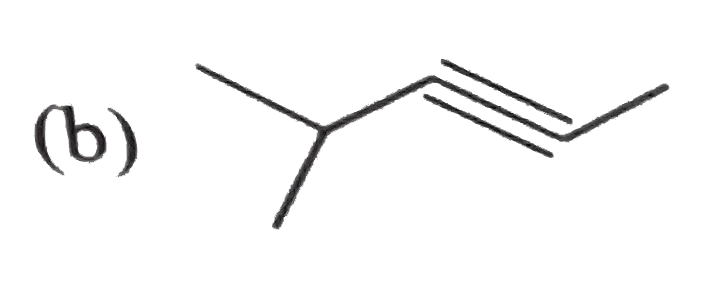Chlorobenzene gives a white precipitate with alcoholic silver nitrate solution.
To determine whether chlorobenzene gives a white precipitate with alcoholic silver nitrate solution, we need to analyze the reaction step by step.
Step 1: Understanding the Reactants
Chlorobenzene (C6H5Cl) is an aromatic compound where a chlorine atom is bonded to a benzene ring. Alcoholic silver nitrate (AgNO3 in ethanol) is a reagent often used to test for the presence of halides.
Hint: Identify the structure of chlorobenzene and the components of alcoholic silver nitrate.
Step 2: Reaction Mechanism
When chlorobenzene is mixed with alcoholic silver nitrate, we expect a reaction that would typically involve the displacement of the chlorine atom by the silver ion (Ag+), leading to the formation of silver chloride (AgCl), which is a white precipitate.
Hint: Consider the type of bond present in chlorobenzene and how it might affect reactivity.
Step 3: Analyzing the Bonding
In chlorobenzene, the carbon-chlorine bond has partial double bond character due to resonance. The lone pair of electrons on the chlorine atom participates in resonance with the aromatic system, making the C-Cl bond stronger and less reactive.
Hint: Recall the concept of resonance and how it stabilizes the molecule.
Step 4: Conclusion on Reactivity
Due to the resonance stabilization in chlorobenzene, the C-Cl bond does not easily break to allow for the formation of AgCl. Therefore, chlorobenzene does not react with alcoholic silver nitrate to produce a white precipitate.
Hint: Think about how the stability of the molecule influences its reactivity.
Final Answer
Chlorobenzene does not give a white precipitate with alcoholic silver nitrate solution. The statement is false.
Chlorobenzene (C6H5Cl) is an aromatic compound where a chlorine atom is bonded to a benzene ring. Alcoholic silver nitrate (AgNO3 in ethanol) is a reagent often used to test for the presence of halides.
When chlorobenzene is mixed with alcoholic silver nitrate, we expect a reaction that would typically involve the displacement of the chlorine atom by the silver ion (Ag+), leading to the formation of silver chloride (AgCl), which is a white precipitate.
In chlorobenzene, the carbon-chlorine bond has partial double bond character due to resonance. The lone pair of electrons on the chlorine atom participates in resonance with the aromatic system, making the C-Cl bond stronger and less reactive.
Due to the resonance stabilization in chlorobenzene, the C-Cl bond does not easily break to allow for the formation of AgCl. Therefore, chlorobenzene does not react with alcoholic silver nitrate to produce a white precipitate.
Chlorobenzene does not give a white precipitate with alcoholic silver nitrate solution. The statement is false.
Topper's Solved these Questions
- HALOALKANES AND HALOARENESBOOK - MODERN PUBLICATIONCHAPTER - HALOALKANES AND HALOARENESEXERCISE - MEMORY TEST (B. Complete the missing links)
11 Videos
- HALOALKANES AND HALOARENESBOOK - MODERN PUBLICATIONCHAPTER - HALOALKANES AND HALOARENESEXERCISE - MEMORY TEST (C. Choose the correct alternative)
12 Videos
- HALOALKANES AND HALOARENESBOOK - MODERN PUBLICATIONCHAPTER - HALOALKANES AND HALOARENESEXERCISE - NCERT examplar Problems (Assertion and Reason Type Questions)
10 Videos
- GENERAL PRINCIPLES AND PROCESSES OF ISOLATION OF ELEMENTSBOOK - MODERN PUBLICATIONCHAPTER - GENERAL PRINCIPLES AND PROCESSES OF ISOLATION OF ELEMENTSEXERCISE - COMPETION FILE (Integer Type Numerical Value Type Questions)
5 Videos
- ORGANIC COMPOUNDS CONTAINING NITROGEN BOOK - MODERN PUBLICATIONCHAPTER - ORGANIC COMPOUNDS CONTAINING NITROGEN EXERCISE - UNIT PRACTICE TEST
5 Videos
Similar Questions
Knowledge Check
Which one of the following will not give white precipitate with ammonical silver nitrate solution
ACH3=C∘C−CH3BCH3−CH∣CH3−C≡−CH3CCH3−CH2−CH=CH2Dall of theseWhich of the following will not give white precipitate with ammoniacal silver nitrate solution ?
ACH3−C≡C−CH3B C
C D
D
Which of the following compound gives white precipitate with silver nitrate solution?
ANaCIBNa2CO3CNa2SO3DNa2S2O3
Which one of the following will not goves white precipitate with ammonical silver nitrate solution ?
View SolutionWhich one of the following does not give white precipitate with acidified silver nitrate solution?
View SolutionH3PO4Δ−−→XΔ−−→Y gives a white precipitate with silver nitrate solution.
X is a
View SolutionH3PO4Δ−−→XΔ−−→Y gives a white precipitate with silver nitrate solution.
Y can form polyanions. The one that represents the polyanion is:
View SolutionSilver nitrate solution when added to a colourless aqueous solution E forms a white precipitate which dissolves in excess of E. if the white precipitate is heated with water it turs black and the supernatant solution gives a white precipitate with acidified barium nitrate solution. Therefore, E is:
View Solution
